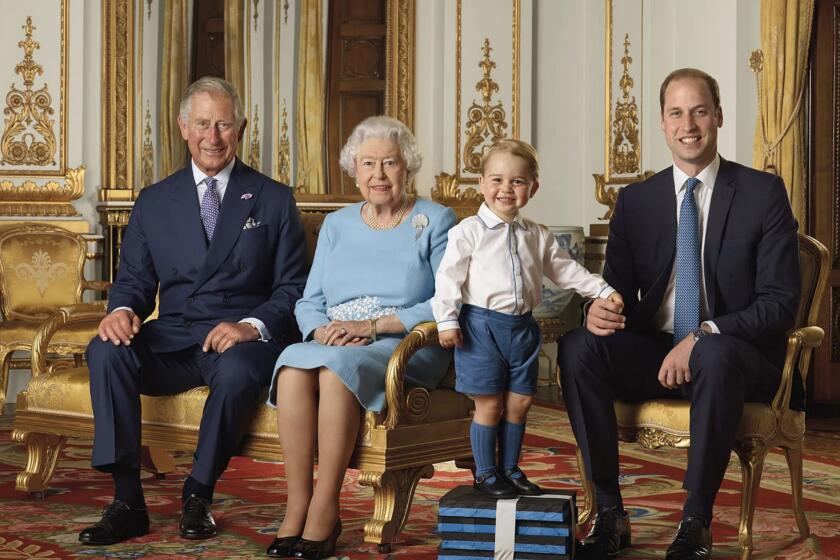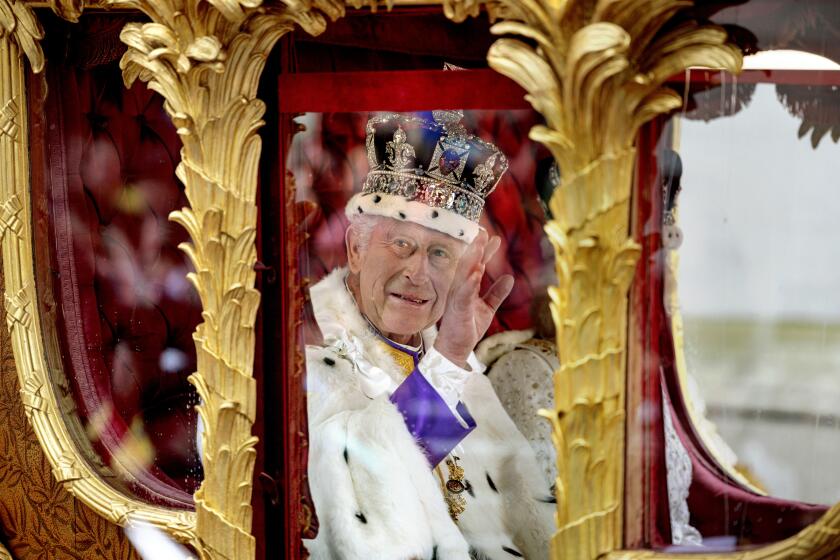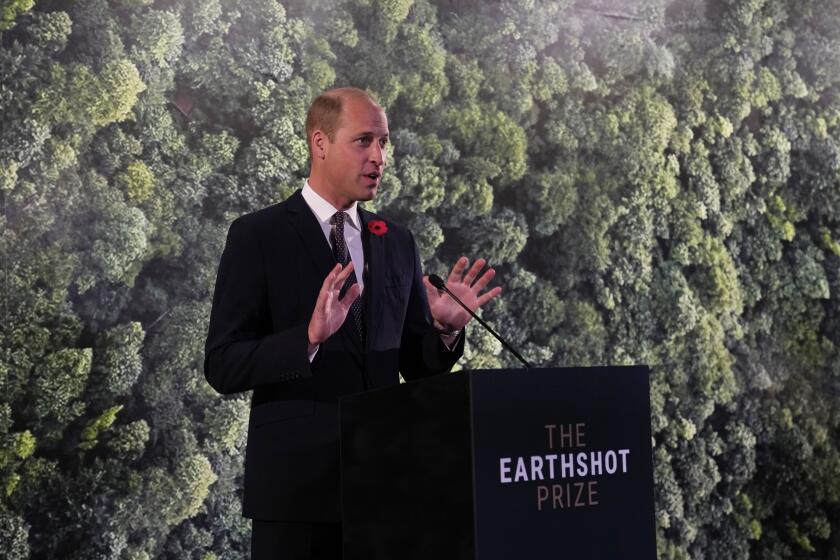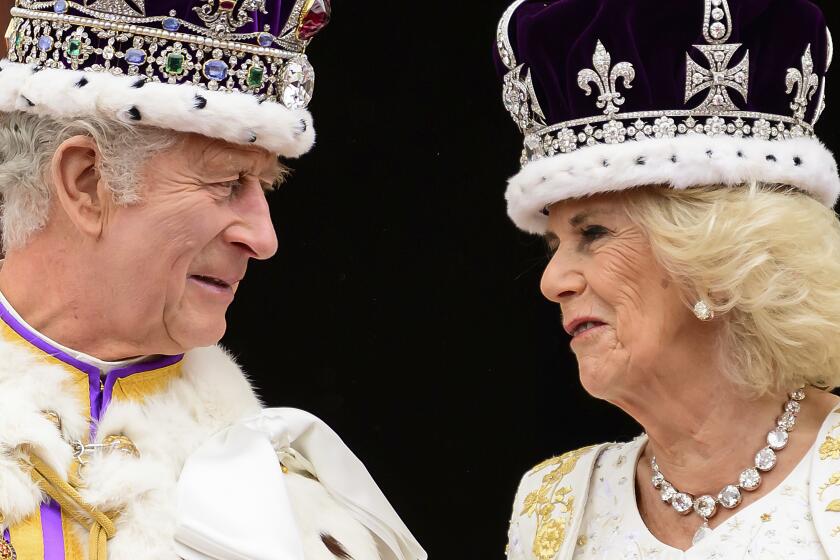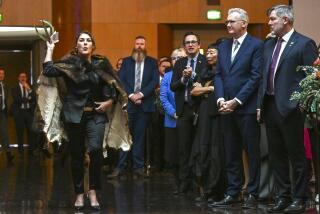King for a year: Charles III shows his reign is more about evolution than revolution
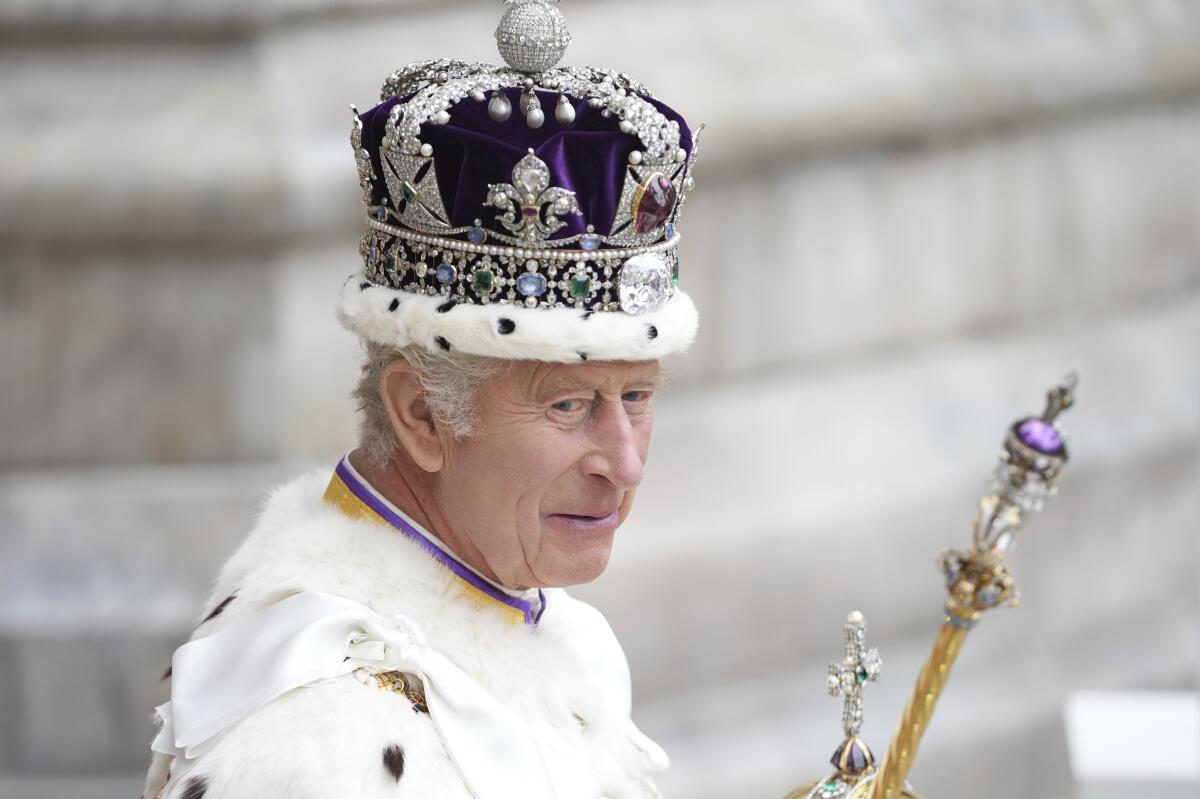
- Share via
LONDON — Don’t rock the boat.
A year after the death of Queen Elizabeth II triggered questions about the future of the British monarchy, the reign of her son, King Charles III, has been marked more by continuity than transformation, by changes in style rather than substance.
Charles, who waited more than 70 years to ascend the throne, moved seamlessly into his new role, avoiding controversy and sidestepping major reforms despite questions about whether an unelected king can still represent the people of modern Britain.
Most people seem to have shrugged off Charles’ occasional faux pas — most publicly when he threw a hissy fit over an aide’s failure to move an ornate pen case during a signing ceremony — focusing instead on successes such as his state visit to Germany, where the king wowed his audience by switching effortlessly between English and German during a speech to lawmakers.
The message delivered by the new king’s first year on the throne is clear, said Sally Bedell Smith, author of “Charles: The Passions and Paradoxes of an Improbable Life.” Change will be subtle, more evolution than revolution.
“The queen was known for incremental change, and his incremental change may be a little more obvious in various moments,’’ she said. “But back in the ’90s, there was a lot of talk about how he just wanted to really shake up the deck and do things in a more radical way and be more outspoken. And I think he has recognized that this is not his role.”
Barring tragedy or revolution, Britain is set to have a man instead of a woman on the throne for the next 75 years at least.
So while Charles, 74, has made it clear that he wants to streamline the monarchy, cut costs and reform a system of patronage seen as bloated and anachronistic, there has been no obvious overhaul of Buckingham Palace — at least not yet.
Instead, Charles has focused on building bridges at home and abroad as he embraces the role of diplomat-in-chief. After traveling to each of the four parts of the United Kingdom — England, Scotland, Wales and Northern Island — the king visited faith communities around the country, greeted Ukrainian President Volodymyr Zelensky in London and staged a successful state visit to Germany.
Charles became sovereign Sept. 8, 2022, the day Elizabeth died after the longest-ever reign of a British monarch.
The following day, the new king alluded to that record achievement in a speech that paid homage to the way his mother honored the history of a 1,000-year-old monarchy while embracing the changes that transformed Britain after World War II.
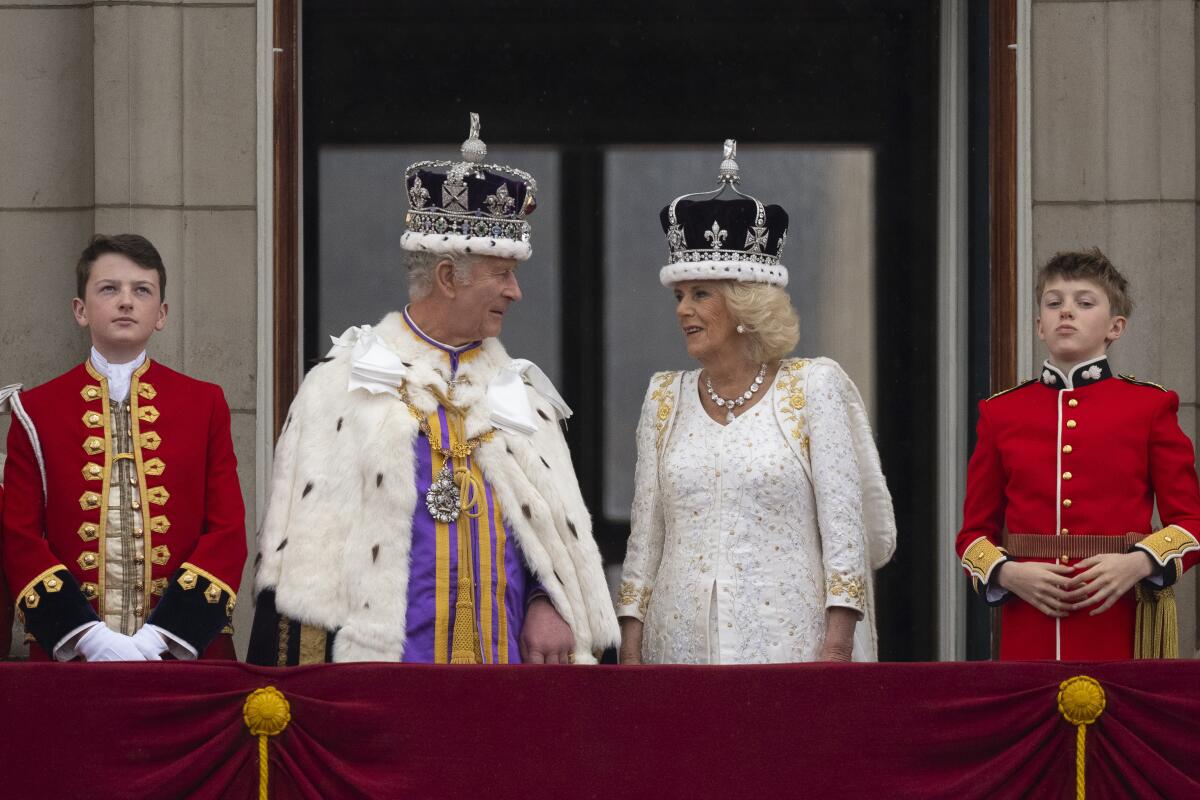
“In her life of service, we saw that abiding love of tradition, together with that fearless embrace of progress, which makes us great as a nation,” Charles said as he pledged to serve all his people, no matter where they live or what they believe.
Known for speaking his mind during his decades as heir to the throne, Charles also acknowledged that he would have to tone down his support for causes such as conservation and environmental protection.
He immediately handed that mantle to his elder son, Prince William, encouraging the new heir apparent to “lead our national conversation” and help “bring the marginal to the center ground, where vital help can be given.”
William accepted that challenge, continuing his fight against climate change and announcing a campaign to end homelessness in Britain.
Charles is an open book compared to his mother, Queen Elizabeth II. And not only is the country he serves as monarch demographically and economically different, its enthusiasm for the crown has waned.
Charles joined the nation in mourning his mother at a state funeral that celebrated the life of the only monarch most people had ever known. After the queen’s piper played one final lament, the Westminster Abbey congregation offered a thunderous rendition of the national anthem — though for the first time in seven decades the first line was “God save our gracious king,” instead of “queen.”
With that, the queen seemed to slide into the background of history, and Charles took center stage in a multicultural nation where schoolchildren now speak more than 300 languages.
During his first Christmas Day broadcast, Charles gave a nod to the changing face of Britain, splicing in video of his travels around the kingdom, including scenes of him meeting with food kitchen volunteers at a Sikh house of worship in Luton, a diverse community 30 miles north of London.
During the coronation ceremony in May, Charles again balanced the traditions of monarchy against the pressure for change.
The conservation charity founded by the second in line to the British throne keeps its investments in a bank that backs fossil fuels.
As Charles sat in the 700-year-old coronation chair at Westminster Abbey, Archbishop of Canterbury Justin Welby placed a jewel-encrusted crown on the king’s head. Then the monarch was enclosed behind a screen where he was anointed with holy oil.
But the monarch also made sure there was a role for other religions, with non-Christian faith leaders taking part in the ceremony for the first time.
And while the TV cameras focused on presidents and prime ministers, lords, ladies and royals as they trooped into the abbey, the audience also included dozens of people invited in recognition of the work they do for charities, schools and youth programs around the country.
More challenges are to come.
The crowning of King Charles III — code-named Operation Golden Orb — was a display of heritage, tradition and spectacle unmatched around the world.
The perception of the monarchy itself has changed since Elizabeth’s accession, making it harder for the palace to stick to its mantra of “Never explain, never complain” as the media demand more information about royal spending and accountability.
Charles is also facing demands to make the palace staff more representative of modern Britain and to acknowledge the monarchy’s role in slavery and imperialism.
Some of those calls come from within the royal family after Prince Harry and his wife, Meghan, criticized the palace in a book and TV series released earlier this year. But there is also pressure from republican groups that want to get rid of the hereditary monarchy and some of the 14 Commonwealth realms that bridle at the idea of having an English king as their head of state.
“It seems likely that his reign will end with [fewer] realms than it started,” said Joe Little, managing editor of Majesty magazine. “But you know, that was also the case with Queen Elizabeth II. It’s just a natural progression, I think. But ultimately, it’s down to the people of the countries who have him as sovereign.”
More to Read
Sign up for Essential California
The most important California stories and recommendations in your inbox every morning.
You may occasionally receive promotional content from the Los Angeles Times.
